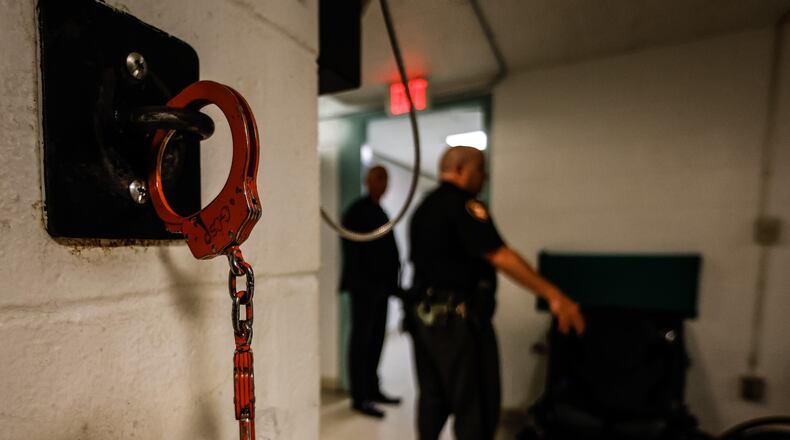The joint report, issued by the coalition and the Pretrial Justice Institute, raises questions about whether changes to the county’s pretrial process could improve safety for the community and those facing time in jail by reducing the number of incarcerated people who have not yet been convicted.
Greene County’s incarceration rate is approximately 21% lower than the national rate, and has a low number of pre-sentenced felons. The Greene County Sheriff’s office has said that enhanced pretrial screening and services could reduce the number of days before release. However, opponents say that the levy in its current iteration does not have a plan to address those services.
“Voters are being asked to make a decision about jail funding with insufficient information about the current jail population,” Guevara said. “This is really a very nuanced conversation, recognizing that the jail is in very poor condition currently and under a consent decree and changes need to be made.”
“The levy does not include any commitment in the budget of the county to services people actually need,” said coalition member Dorothee Bouquet.
The Pretrial Justice Institute made a recommendation that the county establish a working group of citizens, county officials, and individuals impacted by the local criminal justice system to review recent data on the root causes of incarceration, and make decisions about interventions that will address them.
Commissioner Rick Perales said that forming such a group would be something the commissioners are “absolutely” willing to do.
“What we’re putting forward only deals with construction,” he said. “It’s incumbent on us as commissioners to ensure a flexible space. Our jail is not competent. We need to get a jail that is suitable for today, has flexibility for tomorrow and understanding all the broad issues that lay before us and go from there.”
Officials at the Greene County Sheriff’s Office said that they are already working closely with the Mental Health and Recovery Board and would welcome further community involvement. They still, however, need a building.
“Our vision includes something so much bigger and better than what we’re trying to work within. All those partners are welcome, we just need to have a facility that fosters those programs. We want to make it happen, but we need the infrastructure to make it happen,” said Chief Deputy Scott Anger.
The group estimates that 80% of those in jail in 2017 at the national level had some kind of substance abuse disorder. The current jail does not have the right type of beds to address substance abuse disorders or mental health crises. However, the group says that there should be community options, such as 9-1-1 alternatives for those suffering from mental health crises, rather than putting such individuals in jail.
Resident Maggie Morrison testified that her son was arrested twice in the last three years, both times in the midst of a psychotic episode. He spent 12 months in the Greene County Jail, eight of which were pre-trial. During that time, he received little to no mental health treatment, other than to reactivate his medications.
“I recently attended a meeting about the new jail proposal and I heard lots of information about the brick and mortar aspect of the jail,” Morrison said. “Most of the discussion that night was around the number of beds that this new facility should have. But there was almost no discussion about the people that live there.”
The coalition raised additional questions about racial and gender disparities among Greene County inmates. Women comprise 30% of the jail population in Greene County. This disparity is nearly twice the national average, and largely attributed to substance-related convictions. The Greene Leaf Program is used by Greene County courts as a sentencing option for women with substance abuse disorders.
Lack of bail reform and options for community intervention also disproportionally affects black county residents, the report says. The group’s calculations estimate black individuals are incarcerated at a rate of 575 per 100,000 compared to white individuals at 275 per 100,000.
“We are not all impacted at the same rates,” said coalition member Lindie Keaton. “It’s consistent across our country and consistent with best estimates today is that there’s a disproportionate rate of incarceration for black community members.”
Among inmates at the Greene County Jail, 69% have an address outside of Greene County. As of Sept. 29, 15% of inmates in the Greene County Jail were black, compared to 7% of Greene County residents who identify as black or African American.
About the Author

